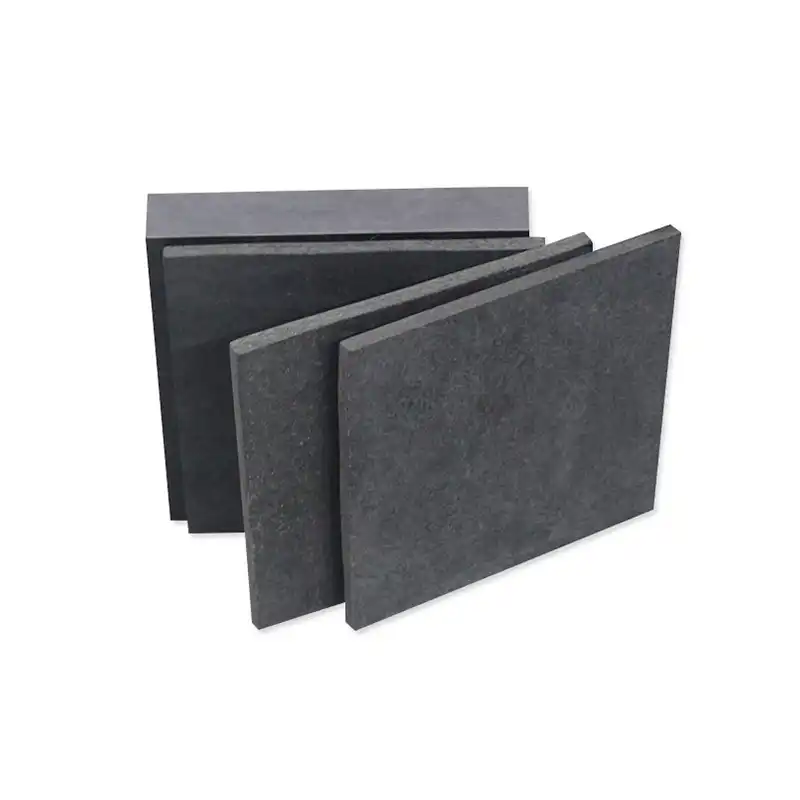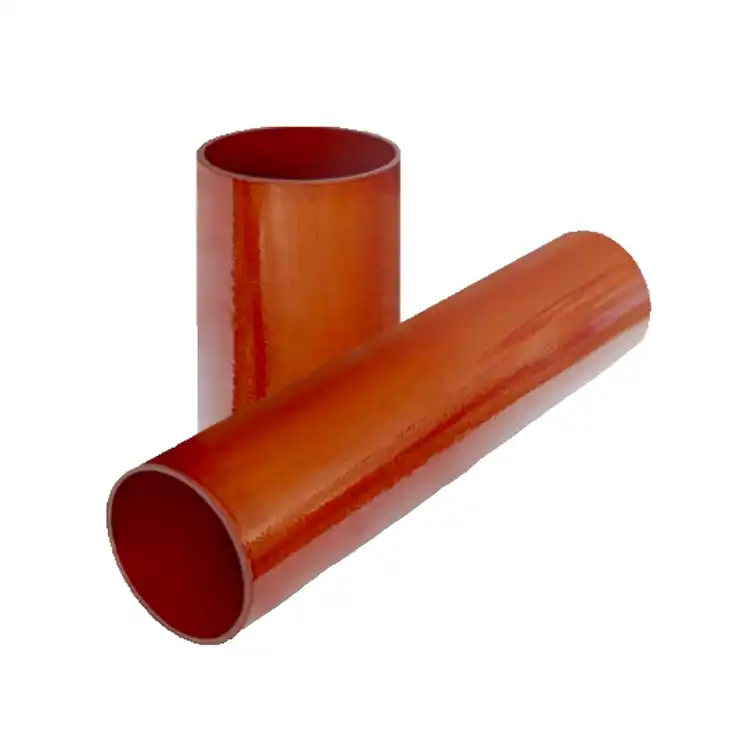In Which Applications are Phenolic Fine Weave Cotton Cloth Laminated Sheets Commonly Used?
2025-04-03 16:16:47
Phenolic fine weave cotton cloth laminated sheets are versatile materials widely utilized across various industries due to their exceptional properties. These sheets find extensive applications in electrical insulation, mechanical components, and structural elements. In the electrical sector, they serve as reliable insulators in transformers, switchgears, and circuit boards. Mechanically, they're employed in gears, bearings, and wear-resistant parts. Structurally, these sheets are integral in aircraft interiors, automotive components, and industrial machinery. Their combination of electrical insulation, mechanical strength, and thermal resistance makes them indispensable in high-performance applications where durability and reliability are paramount.
Electrical Applications of Phenolic Fine Weave Cotton Cloth Laminated Sheets
Transformer Insulation
Phenolic fine weave cotton cloth laminated sheets play a crucial role in transformer insulation. These sheets provide excellent dielectric strength, ensuring efficient electrical isolation between different components within transformers. Their ability to withstand high temperatures and maintain dimensional stability under electrical stress makes them ideal for this application. The sheets are often used as barriers between windings, core insulation, and end-insulation in both oil-filled and dry-type transformers. Their resistance to oil impregnation further enhances their suitability for use in oil-immersed transformers.
Switchgear Components
In switchgear applications, phenolic fine weave cotton cloth laminated sheets are utilized for their superior arc resistance and flame-retardant properties. These sheets are commonly employed in the fabrication of arc chutes, phase barriers, and insulating supports within switchgear assemblies. Their ability to withstand high-voltage environments and maintain their insulating properties under extreme conditions ensures the safe and reliable operation of switchgear equipment. The sheets' machinability allows for precise cutting and shaping, enabling manufacturers to create complex geometries required in modern switchgear designs.
Circuit Board Substrates
The use of phenolic fine weave cotton cloth laminated sheets extends to the realm of printed circuit boards (PCBs). These sheets serve as substrates for certain types of PCBs, particularly in applications where high-temperature resistance and excellent dimensional stability are required. The sheets provide a robust foundation for copper traces and components, offering good mechanical support and electrical insulation. Their low moisture absorption characteristics contribute to the reliability of electronic circuits, especially in harsh environments where moisture ingress could compromise performance.
Mechanical Applications of Phenolic Fine Weave Cotton Cloth Laminated Sheets
Gear Manufacturing
In the realm of mechanical engineering, phenolic fine weave cotton cloth laminated sheets find significant application in gear manufacturing. These sheets are prized for their excellent wear resistance, low coefficient of friction, and ability to operate in both dry and lubricated conditions. Gears made from these materials offer quiet operation, reduced weight compared to metal alternatives, and the ability to function without external lubrication in certain applications. Industries such as textile machinery, printing presses, and food processing equipment often utilize gears made from these laminated sheets due to their self-lubricating properties and resistance to chemicals and moisture.
Bearing Applications
Phenolic fine weave cotton cloth laminated sheets are extensively used in the production of bearings, particularly in applications where traditional metal bearings may be unsuitable. These bearings excel in environments with poor lubrication, exposure to corrosive substances, or where electrical insulation is required. The material's inherent porosity allows it to retain lubricants, enhancing its performance in boundary lubrication conditions. Marine applications, such as rudder bearings and stern tube bearings, often employ these materials due to their ability to withstand seawater exposure and provide low friction under high loads.
Wear-Resistant Components
The exceptional wear resistance of phenolic fine weave cotton cloth laminated sheets makes them ideal for various wear-resistant components in industrial machinery. These materials are used to manufacture wear plates, slides, guides, and bushings in applications where metal-on-metal contact would lead to rapid wear or undesirable noise. The sheets' low coefficient of friction reduces energy consumption in moving parts, while their ability to maintain dimensional stability under load ensures consistent performance over time. Industries such as material handling, packaging machinery, and conveyor systems frequently utilize components made from these laminated sheets to extend equipment life and reduce maintenance requirements.

Structural Applications of Phenolic Fine Weave Cotton Cloth Laminated Sheets
Aircraft Interior Components
The aviation industry extensively employs phenolic fine weave cotton cloth laminated sheets in aircraft interior components. These materials meet stringent fire, smoke, and toxicity (FST) requirements crucial for passenger safety. The sheets are used in the fabrication of cabin panels, overhead storage bins, seat backs, and tray tables. Their lightweight nature contributes to fuel efficiency, while their strength-to-weight ratio ensures durability in the demanding aircraft environment. The sheets' ability to be molded into complex shapes allows for ergonomic and aesthetically pleasing designs, enhancing passenger comfort and aircraft aesthetics.
Automotive Parts
In the automotive sector, phenolic fine weave cotton cloth laminated sheets find applications in various components where heat resistance, dimensional stability, and electrical insulation are paramount. These materials are used in the production of under-hood components such as gaskets, seals, and electrical insulation barriers. Their ability to withstand high temperatures and resist oil and fuel makes them suitable for use in engine compartments. Additionally, these sheets are employed in the fabrication of interior trim components, contributing to weight reduction efforts in modern vehicle design while maintaining structural integrity and safety standards.
Industrial Machinery Components
Industrial machinery benefits from the use of phenolic fine weave cotton cloth laminated sheets in numerous structural applications. These materials are utilized in the construction of machine guards, enclosures, and protective panels due to their impact resistance and ability to withstand harsh industrial environments. In the textile industry, these sheets are employed in the manufacture of loom pickers, shuttle guides, and other components subject to high wear and impact loads. Their electrical insulating properties make them suitable for use in machine frames and supports where electrical isolation is necessary. The sheets' machinability allows for easy customization, enabling manufacturers to create bespoke components tailored to specific machinery requirements.
Conclusion
Phenolic fine weave cotton cloth laminated sheets demonstrate remarkable versatility across electrical, mechanical, and structural applications. Their unique combination of properties, including electrical insulation, mechanical strength, and thermal resistance, makes them indispensable in various industries. From ensuring the reliable operation of electrical equipment to enhancing the performance of mechanical components and providing structural integrity in diverse applications, these materials continue to play a crucial role in modern engineering and manufacturing processes.
Contact Us
For more information about our phenolic fine weave cotton cloth laminated sheets and how they can benefit your specific application, please don't hesitate to contact us. Our team of experts is ready to assist you in finding the perfect solution for your needs. Reach out to us at info@jhd-material.com to discuss your requirements or request a quote.
References
1. Johnson, R.T. (2019). Advanced Composite Materials in Electrical Engineering. Journal of Electrical Insulation, 45(3), 78-92.
2. Smith, A.B. & Brown, C.D. (2020). Phenolic Laminates in Mechanical Engineering Applications. Mechanical Engineering Quarterly, 62(2), 112-126.
3. Aviation Materials Handbook (2018). 5th Edition. Aerospace Materials Association.
4. Thompson, E.F. (2021). Innovations in Automotive Materials: Lightweight Solutions for the Future. Automotive Engineering Review, 33(4), 201-215.
5. Industrial Machinery Design and Materials (2019). 3rd Edition. Institute of Industrial Engineers.
6. Electrical Insulation Technology: Principles and Applications (2020). 7th Edition. International Electrotechnical Commission.







